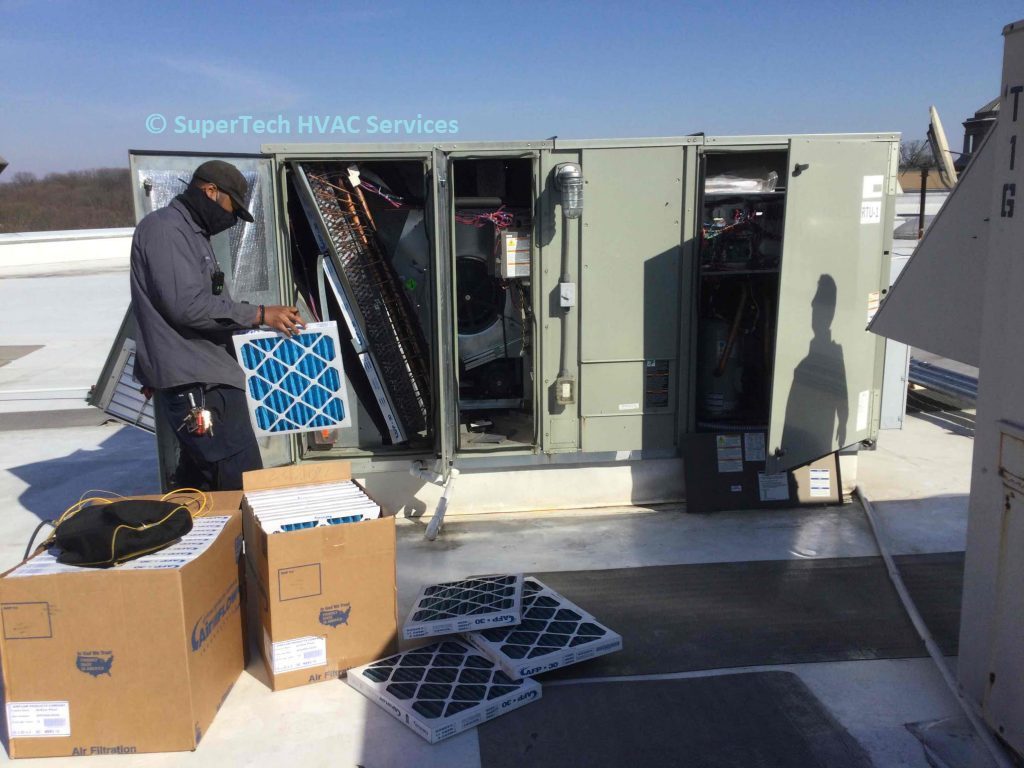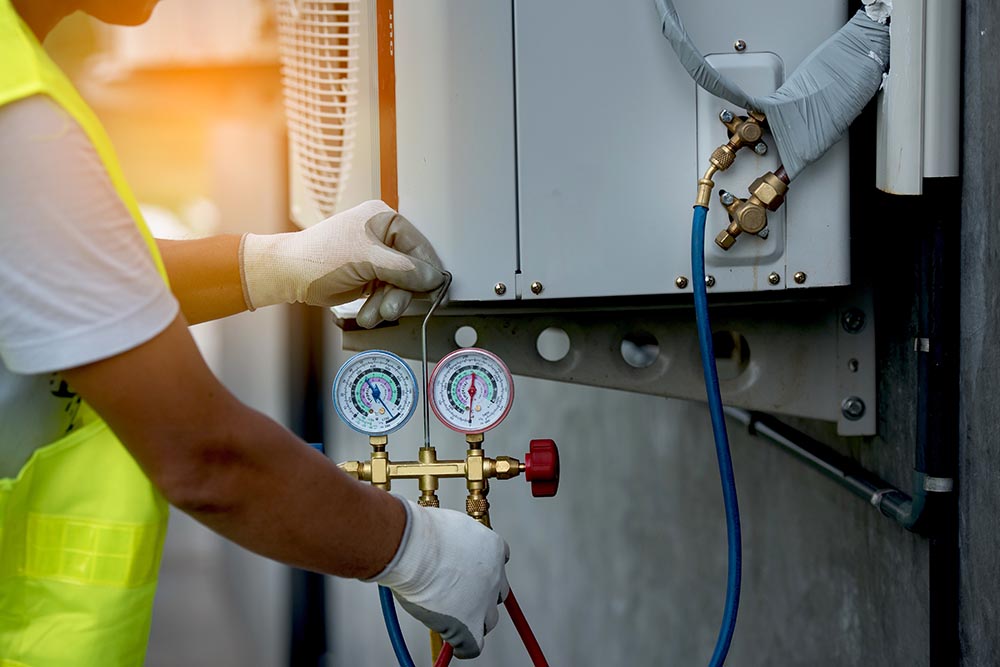Local Insights for Seamless heat pump replacement ooltewah tn
How a Warmth Pump and Furnace Job With Each Other to Maximize Your Home's Home heating Performance
Understanding just how a heat pump and heating system interact is essential for property owners seeking reliable heating solutions. Each system has its toughness, offering a well balanced method to home convenience. The heatpump masters moderate temperatures, while the heater provides quick warmth throughout extreme cold. This harmony not only minimizes energy prices yet additionally enhances the lifespan of both devices. What elements affect this cooperation, and how can house owners optimize their advantages?
Recognizing Warm Pumps: Just How They Work
Although numerous individuals might be not familiar with their internal functions, warm pumps play a necessary duty in modern furnace. These tools run by moving heat from one location to another, utilizing the concepts of thermodynamics. In colder months, a heatpump essences heat from the outside air, ground, or water, and transfers it inside your home to warm the space. Conversely, during warmer months, it can turn around the procedure, functioning as an air conditioning system by getting rid of warm from inside to the outside.Heat pumps include an evaporator, compressor, condenser, and development valve. The cooling agent within the system absorbs warm as it vaporizes at low temperature levels and stress. The compressor then raises the stress and temperature of the cooling agent, enabling it to launch warmth as it condenses. This reliable procedure can significantly minimize energy usage compared to typical heating approaches, making heatpump a lasting choice for climate control in homes.
The Function of Heating Systems in Home Heating
Heaters play an essential function in home heating by providing a trusted resource of warmth throughout the chillier months. They operate by generating warmth through combustion or electrical resistance, distributing it throughout the home via ducts or glowing systems. The performance of a heater is commonly measured by its Annual Gas Usage Efficiency (AFUE) score, which shows how efficiently the system converts fuel right into heat.Furnaces can make use of various energy sources, including gas, oil, gas, or electricity, enabling homeowners to select the most appropriate choice for their needs. Unlike heatpump, which may struggle in severe cold, heating systems preserve consistent efficiency, making sure that interior temperature levels remain comfortable despite exterior problems. Furthermore, modern-day furnaces often come outfitted with advanced modern technology, such as clever thermostats and variable-speed blowers, boosting their performance and responsiveness. This adaptability makes heating systems a critical component in all-encompassing home heating techniques.

Benefits of Utilizing Both Solutions With Each Other
Combining the toughness of both furnaces and heatpump can bring about a more effective and efficient home heating solution. Using both systems enables homeowners to take benefit of the heatpump's energy performance during milder temperatures while counting on the heating system for even more extreme cold problems. This dual strategy can considerably reduce power expenses, as heatpump take in much less electrical power than typical heating methods when temperatures are moderate.Additionally, utilizing both systems with each other can enhance convenience degrees in the home. Heat pumps can give constant, even heating, while heaters can quickly increase ambient temperatures when needed. Additionally, the integration of both systems can expand the life-span of equipment by decreasing wear and tear on each system, as they share the workload. Ultimately, home owners can delight in a balanced, cost-effective home heating remedy that adjusts effortlessly to varying weather condition problems, ensuring a warm and inviting home throughout the winter season.
Just How Warmth Pumps and Furnaces Complement Each Other
When property owners incorporate warm pumps and furnaces, they create a complementary heater that makes the most of effectiveness and comfort. Heatpump operate by transferring warmth from the outside air or ground, making them very efficient in modest climates. They excel throughout milder temperatures, giving cost-effective home heating. Conversely, furnaces create warmth via burning or electric resistance, supplying strong, prompt heat during severe chilly conditions.The mix of these two systems permits for dynamic adjustments based upon temperature variations. During warmer months or milder wintertime days, the heatpump can take the lead, conserving energy and lowering costs. As temperatures decline, the furnace can effortlessly engage, guaranteeing regular heat throughout the home. This harmony not just maximizes energy use yet additionally boosts the life expectancy of both systems, as each device operates within its excellent efficiency array. Together, they produce a balanced environment that adapts to differing environment needs.
Enhancing Effectiveness: Tips for Homeowners
Home owners can boost their home heating performance through several functional techniques. Developing a normal maintenance timetable, incorporating wise thermostat innovation, and executing effective insulation and securing remedies are key steps. These actions not just enhance convenience however also minimize energy costs.
Regular Maintenance Set Up
To assure maximum heating efficiency, developing a routine upkeep routine is essential for any home. Homeowners must focus on routine examinations of both heatpump and heaters to determine peak efficiency. This includes altering air filters every one to three months, as clogged up filters can considerably decrease efficiency. Additionally, scheduling expert upkeep a minimum of yearly allows service technicians to identify and resolve prospective issues before they rise. Homeowners must also cleanse the heatpump's outside device to avoid particles buildup that can prevent air movement. By sticking to a regular upkeep routine, house owners not only boost their heating unit' performance yet also expand their life expectancy, causing greater convenience and reduced energy prices throughout the chillier months.
Smart Thermostat Combination
Incorporating a wise thermostat right into a home furnace can significantly improve power performance, especially as it permits for specific control over temperature setups. These tools can find out the house owner's routine and preferences, automatically changing the temperature to enhance comfort while minimizing power use. They can lower home heating throughout times when the home is vacant, reducing unneeded consumption. Lots of smart thermostats likewise supply real-time energy usage information, enabling home owners to make enlightened decisions about their home heating practices. Furthermore, remote accessibility through mobile phone apps allows individuals to adjust settings from anywhere, guaranteeing the home is warm upon return. Overall, wise thermostat assimilation not only boosts convenience but considerably adds to energy financial savings and performance.
Insulation and Securing Solutions
Smart thermostats play a crucial duty in energy efficiency, but their effectiveness can be greatly enhanced by correct insulation and securing options. Property owners should focus on shielding attics, walls, and floorings to lessen warmth loss. Top notch insulation products, such as spray foam or fiberglass, can greatly enhance thermal resistance. Furthermore, securing gaps around windows, ducts, and doors stops cool air infiltration and warm getaway. Weatherstripping and caulking work techniques for addressing these leaks - furnace replacement. Routine assessments for air leakages, along with using blower door examinations, can help identify issue locations. By investing in insulation and securing, home owners can maximize the efficiency of their furnace, inevitably resulting in decreased energy usage and lower utility costs
Usual Misconceptions Regarding Warmth Pumps and Furnaces
What mistaken beliefs surround heat pumps and furnaces? Lots of people erroneously believe that heat pumps are ineffective in cooler environments. Actually, contemporary heat pumps are designed to operate successfully also in low temperatures, offering dependable home heating throughout winter months. One more typical myth is that furnaces are constantly much more efficient than warmth pumps. Nevertheless, this depends on the details energy sources and performance rankings of the systems concerned. Some may additionally believe that utilizing both systems all at once is unnecessary, yet as a matter of fact, this combination can maximize home heating effectiveness, especially during extreme weather. Furthermore, people commonly presume that heat pumps call for continuous upkeep, when in reality, they have similar maintenance requires to traditional heating unit. By exposing these misconceptions, home owners can make more enlightened decisions regarding their home heating options, inevitably resulting in improved convenience and energy performance in their homes.
Maintenance Considerations for Combined Solutions

Frequently Asked Inquiries
Can Warm Pumps Work Properly in Exceptionally Cold Climates?
Warmth pumps can struggle in exceptionally chilly environments due to lowered efficiency and heat removal limitations. Nonetheless, developments in technology have brought about designs made for much better performance in such conditions, enhancing their practicality in harsh settings.
The Length Of Time Do Heat Pumps and Furnaces Normally Last?
Warmth pumps usually last 15 to twenty years, while heaters have a life expectancy of 15 to thirty years. Normal upkeep can prolong their durability, making sure efficient procedure and reducing the requirement for premature replacements.

What Is the Average Expense of Putting Up Both Systems?
The ordinary cost of setting Recommended Reading up both a warm pump and a heater typically varies in between $5,000 to $10,000 - ductless mini splits. Elements affecting this price consist of system dimension, setup intricacy, and regional labor rates
Are There Tax Incentives for Making Use Of Energy-Efficient Home Heating Solutions?
Several property owners ask about tax motivations for energy-efficient home heating systems. Numerous government and state programs often offer credit scores or discounts, urging the adoption of sustainable modern technologies to minimize power usage and promote ecological obligation.
Just how Do I Choose the Right Size Heatpump and Heater?
Picking the best size heat pump and furnace entails determining the home's square footage, taking into consideration insulation high quality, and examining local environment. Consulting an expert can guarantee excellent system efficiency and energy efficiency based upon certain requirements. heat pump service. Understanding exactly how a warm pump and furnace work together is crucial for homeowners looking for effective heating remedies. In cooler months, a heat pump extracts warm from the outside air, ground, or water, and transfers it inside to warm the living area. When home owners integrate warmth pumps and heating systems, they develop a complementary heating system that makes best use of efficiency and convenience. Heat pumps operate by transferring warmth from the outside air or ground, making them highly description effective in modest environments. Warm pumps can battle in extremely cool climates due to minimized performance and warmth removal constraints